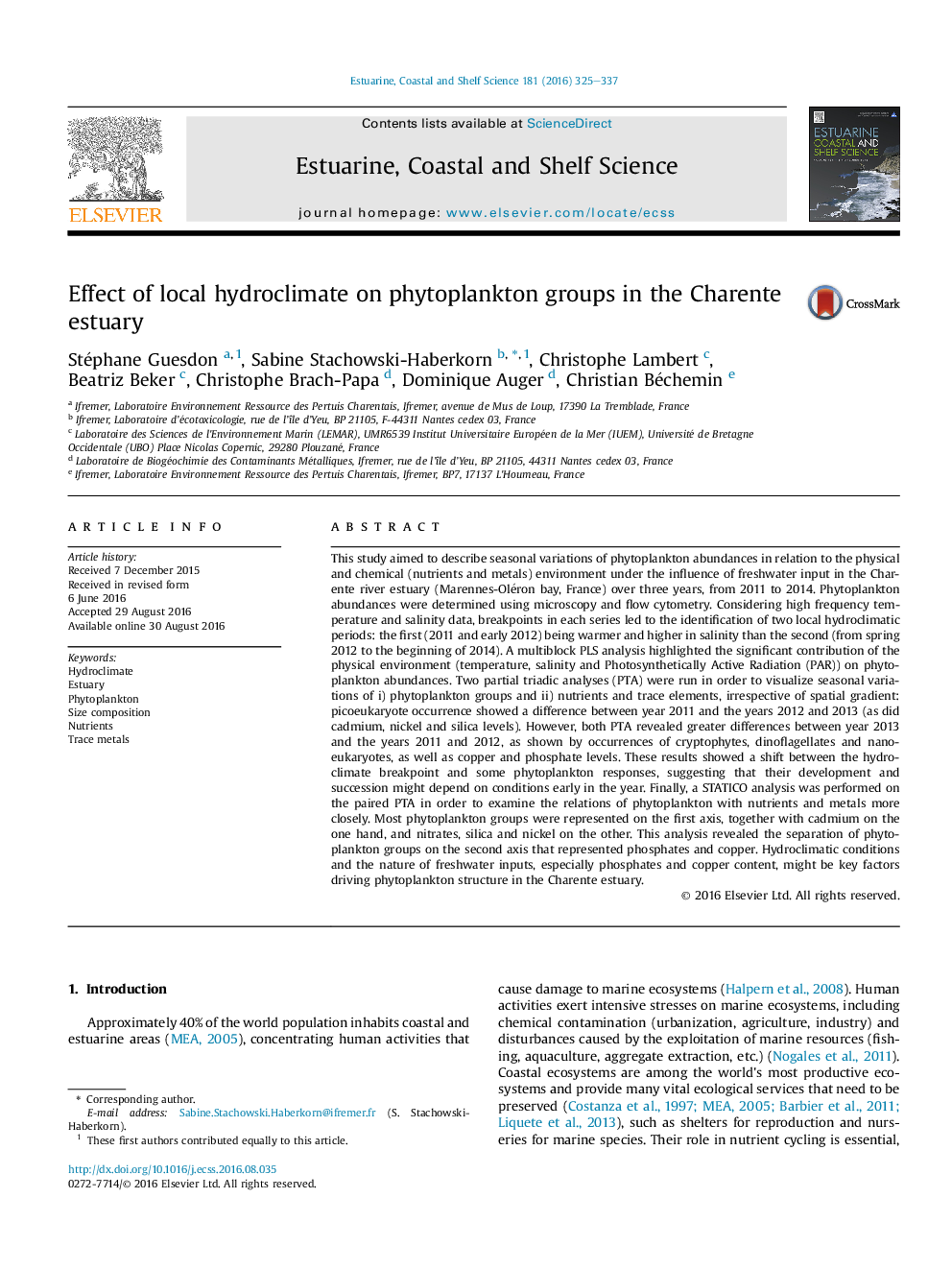| Article ID | Journal | Published Year | Pages | File Type |
|---|---|---|---|---|
| 4539151 | Estuarine, Coastal and Shelf Science | 2016 | 13 Pages |
•Phytoplankton groups were studied in the Charente estuary for three years.•The local hydro-climate (temperature and salinity) showed two distinct periods.•Phytoplankton dynamics were mainly driven by their physical environment (temperature).•The diatom spring bloom was fairly consistent.•Phytoplankton structure could be linked to copper and phosphates.
This study aimed to describe seasonal variations of phytoplankton abundances in relation to the physical and chemical (nutrients and metals) environment under the influence of freshwater input in the Charente river estuary (Marennes-Oléron bay, France) over three years, from 2011 to 2014. Phytoplankton abundances were determined using microscopy and flow cytometry. Considering high frequency temperature and salinity data, breakpoints in each series led to the identification of two local hydroclimatic periods: the first (2011 and early 2012) being warmer and higher in salinity than the second (from spring 2012 to the beginning of 2014). A multiblock PLS analysis highlighted the significant contribution of the physical environment (temperature, salinity and Photosynthetically Active Radiation (PAR)) on phytoplankton abundances. Two partial triadic analyses (PTA) were run in order to visualize seasonal variations of i) phytoplankton groups and ii) nutrients and trace elements, irrespective of spatial gradient: picoeukaryote occurrence showed a difference between year 2011 and the years 2012 and 2013 (as did cadmium, nickel and silica levels). However, both PTA revealed greater differences between year 2013 and the years 2011 and 2012, as shown by occurrences of cryptophytes, dinoflagellates and nanoeukaryotes, as well as copper and phosphate levels. These results showed a shift between the hydroclimate breakpoint and some phytoplankton responses, suggesting that their development and succession might depend on conditions early in the year. Finally, a STATICO analysis was performed on the paired PTA in order to examine the relations of phytoplankton with nutrients and metals more closely. Most phytoplankton groups were represented on the first axis, together with cadmium on the one hand, and nitrates, silica and nickel on the other. This analysis revealed the separation of phytoplankton groups on the second axis that represented phosphates and copper. Hydroclimatic conditions and the nature of freshwater inputs, especially phosphates and copper content, might be key factors driving phytoplankton structure in the Charente estuary.
Graphical abstractFigure optionsDownload full-size imageDownload high-quality image (282 K)Download as PowerPoint slide
